Geology Of Natural Disasters And How To Write Them Into Your Fictional Universe.
Geology of Natural Disasters and How to write them into your fictional universe.
So, you want to write about a natural disaster to advance your plot and torture your players/characters even more? Let me tell you how, accurately.
I feel like unless it is a volcano, natural disasters are a pretty slept on plot drivers, and some of them are really cool and unique! Today, I will talk to you about land slides, earthquakes (And earthquake related disasters), and volcanoes.
Landslides: Probably one I see the least in stories, but one that would be incredibly interesting to write into a plot where they believe in curses. Landslides can happen along ocean bluffs, slightly hilly areas, and highly mountainous areas, this means it is something that can happen in most landscapes. But what can trigger a landslide? Mostly all you need to trigger a landslide could be just abnormally large amounts of rain, excessive deforestation (with a little bit of rain), or an earthquake. If you don't want to use deforestation or an earthquake as a catalyst, a really cool indicator that the land is slipping and may be prone to a collapse is J hooked trees.

This indicates that there is soil creeping slowly over time, and it may lead to a major landslide.
2. Earthquakes: Probably one of the easiest things to write, earthquakes can happen anywhere, but they are most common in places that are tectonically active areas. There are about three types of environments you can expect earthquakes to be common. The first is just rugged mountains, if your landscape looks like this, you should write in earthquakes. Associated hazards could be landslides, avalanches, and large falling rocks.

The next landscape could be a thin mountain range, next to the ocean, very scenic, but very dangerous. Essentially, I am describing a subduction zone environment.

Earthquakes in these areas could equal a couple different associated disasters. Scenario one: A very large earthquake happens, and the ocean begins to recede. This is a tsunami, enough said. If you are writing a tsunami though, please, please, do not write it as a large wave, thank you. Also, a common way people are hurt by tsunami's are from them going into the ocean because they don't understand a tsunami is going to happen.

Scenario two: A large earthquake happens, your characters are in a valley and suddenly the ground begins to liquify as the ground shakes, once the shaking stops, the ground becomes solid like nothing ever happened, except everything has suddenly sunk into the now hard ground. This is called liquefaction and it typically happens in areas that have loose dirt or lots of saturated soil.

Scenario three: There are a lot of small earthquakes, they do not cause a lot of damage, but you begin to notice that one of the isolated mountains has a plume rising. Earthquakes can indicate lava moving underground and the filling of magma chambers.

The next environment that can host lots of earthquakes would be regions that have a lot of really deep valleys and small mountain ranges (not cone volcanoes), but overall seems pretty flat.

This indicates a transform fault like the San Andreas. If you want to hint at there being earthquakes in the area, you can show fence posts that are suddenly several feet out of line at a dilapidated farm or something similar.

(These earthquakes are different because they are cased from sideways movement, not an up-and-down movement this hint can only be used for this environment). Volcanoes would not be found here, but liquefaction and landslides could still occur here.
4. Volcanoes: If you thought earthquakes had a lot of information, volcanoes do too. First you have to ask yourself, what kind of volcano you want to have, what kind of eruption style? So lets break down the kind of eruptions you can have and what their landscapes look like. Hawaiian Shield volcano: This will produce a smooth fast lava, the landscape typically is pretty flat, but there will be small cones and the rocks can have a ropey or jagged texture and the rocks will be almost exclusively black to dark red.

Stratovolcanoes: These will be solitary mountains, typically, that look like perfect cones (Picture shown in earthquake section). These will have large ash cloud eruptions and pyroclastic flows, they may have some lava, but typically most damage is done from the pyroclastic flows (think Pompeii). Some hints of these, other than describing the cone features (which can be hidden by other mountains), would be to talk about petrified wood! Trees can get fossilized in the ash and I imagine it would be very strange to find this rock that clearly looks to be a piece of wood, but its a rock. Subcategory- Calderas: Used to be a large stratovolcano, but they erupt so explosively that the entire cone collapses and creates a basin.

There are a lot of kinds of volcanoes out there, so forgive me for just putting an infographic and then talking to you about these really rare types of eruptions that I feel like people should know about.

Okay lets talk about blue lava (kind of) and black lava

You will notice the lava is still red in the middle of this image, during the day these would look like a normal eruption, but at night the burning sulfur would make it appear blue. Some cool features other than this, would be that any water in the area would become very acidic and burn the skin due to sulfuric acid. This would again be really cool if you are trying to describe a 'cursed' land.
Black lava: This happens only in the east African rift I believe, but it is a carbonatite lava, but if you are writing in a rift valley (where the continent is tearing apart to form a new ocean) this might be a cool feature. The lava will cool white and will quickly erode, it makes for a very alien landscape!

Anyway as always, this is supposed to be an introductive guide for the basics of writing geology to create cool landscapes/features into dnd or fictional universes, if you are a geologist please understand my oversimplification of tectonics, I didn't want people to run away.
More Posts from Reaperswriting and Others
my 10 holy grail pieces of writing advice for beginners
from an indie author who's published 4 books and written 20+, as well as 400k in fanfiction (who is also a professional beta reader who encounters the same issues in my clients' books over and over)
show don't tell is every bit as important as they say it is, no matter how sick you are of hearing about it. "the floor shifted beneath her feet" hits harder than "she felt sick with shock."
no head hopping. if you want to change pov mid scene, put a scene break. you can change it multiple times in the same scene! just put a break so your readers know you've changed pov.
if you have to infodump, do it through dialogue instead of exposition. your reader will feel like they're learning alongside the character, and it will flow naturally into your story.
never open your book with an exposition dump. instead, your opening scene should drop into the heart of the action with little to no context. raise questions to the reader and sprinkle in the answers bit by bit. let your reader discover the context slowly instead of holding their hand from the start. trust your reader; donn't overexplain the details. this is how you create a perfect hook.
every chapter should end on a cliffhanger. doesn't have to be major, can be as simple as ending a chapter mid conversation and picking it up immediately on the next one. tease your reader and make them need to turn the page.
every scene should subvert the character's expectations, as big as a plot twist or as small as a conversation having a surprising outcome. scenes that meet the character's expectations, such as a boring supply run, should be summarized.
arrive late and leave early to every scene. if you're character's at a party, open with them mid conversation instead of describing how they got dressed, left their house, arrived at the party, (because those things don't subvert their expectations). and when you're done with the reason for the scene is there, i.e. an important conversation, end it. once you've shown what you needed to show, get out, instead of describing your character commuting home (because it doesn't subvert expectations!)
epithets are the devil. "the blond man smiled--" you've lost me. use their name. use it often. don't be afraid of it. the reader won't get tired of it. it will serve you far better than epithets, especially if you have two people of the same pronouns interacting.
your character should always be working towards a goal, internal or external (i.e learning to love themself/killing the villain.) try to establish that goal as soon as possible in the reader's mind. the goal can change, the goal can evolve. as long as the reader knows the character isn't floating aimlessly through the world around them with no agency and no desire. that gets boring fast.
plan scenes that you know you'll have fun writing, instead of scenes that might seem cool in your head but you know you'll loathe every second of. besides the fact that your top priority in writing should be writing for only yourself and having fun, if you're just dragging through a scene you really hate, the scene will suffer for it, and readers can tell. the scenes i get the most praise on are always the scenes i had the most fun writing. an ideal outline shouldn't have parts that make you groan to look at. you'll thank yourself later.
happy writing :)

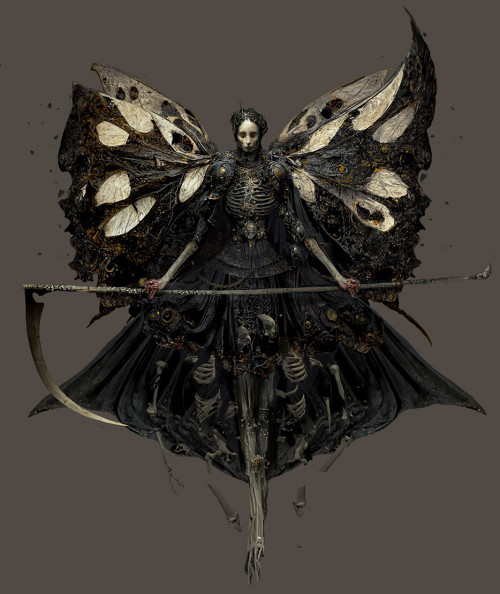


Art by Nekro


oyster mushrooms!!!
Amazing day to night time-lapse of a Ghost fungus.
It has bioluminescent properties and is known to be found primarily in southern Australia and Tasmania
hot artists don't gatekeep
I've been resource gathering for YEARS so now I am going to share my dragons hoard
Floorplanner. Design and furnish a house for you to use for having a consistent background in your comic or anything! Free, you need an account, easy to use, and you can save multiple houses.
Comparing Heights. Input the heights of characters to see what the different is between them. Great for keeping consistency. Free.
Magma. Draw online with friends in real time. Great for practice or hanging out. Free, paid plan available, account preferred.
Smithsonian Open Access. Loads of free images. Free.
SketchDaily. Lots of pose references, massive library, is set on a timer so you can practice quick figure drawing. Free.
SculptGL. A sculpting tool which I am yet to master, but you should be able to make whatever 3d object you like with it. free.
Pexels. Free stock images. And the search engine is actually pretty good at pulling up what you want.
Figurosity. Great pose references, diverse body types, lots of "how to draw" videos directly on the site, the models are 3d and you can rotate the angle, but you can't make custom poses or edit body proportions. Free, account option, paid plans available.
Line of Action. More drawing references, this one also has a focus on expressions, hands/feet, animals, landscapes. Free.
Animal Photo. You pose a 3d skull model and select an animal species, and they give you a bunch of photo references for that animal at that angle. Super handy. Free.
Height Weight Chart. You ever see an OC listed as having a certain weight but then they look Wildly different than the number suggests? Well here's a site to avoid that! It shows real people at different weights and heights to give you a better idea of what these abstract numbers all look like. Free to use.
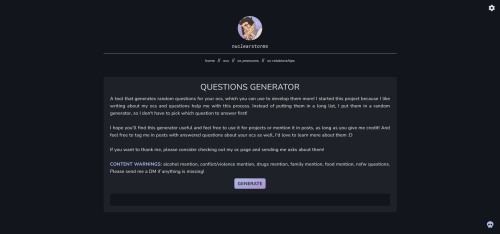



TOOL: OC QUESTIONS GENERATOR
a neat little generator that gives you a random question for your ocs! find it here // support me on ko-fi
>> FEATURES
over 600 different questions, covering every aspect of character building
easy to use, no unnecessary distractions, just a very straightforward generator
content warnings on the page itself, as well as in the first screenshot
>> NOTES
please send me a dm if there’s a content warning missing, i’ll add it to the page immediately!
if you have any ideas for questions, feel free to let me know and if they’re not on the list already, i’ll add them!
feel free to use this tool for personal projects or tell your friends about it, as long as you don’t try to steal the code of the page or claim the generator as your own :)
i do not take credit for all the questions in this generator, i’ve gathered them at some point from both my own brain as well as stuff online
likes are always welcome, reblogs much appreciated!
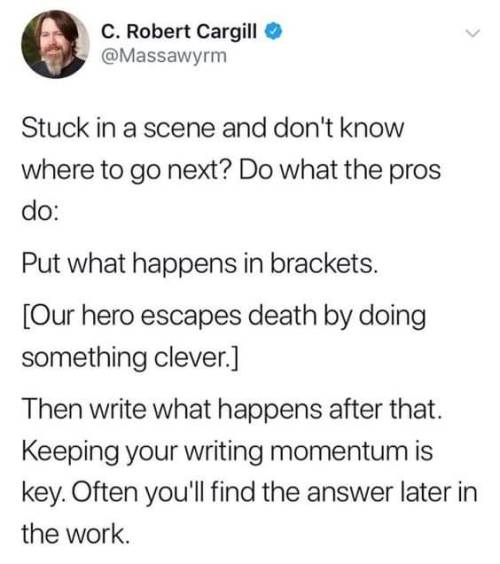
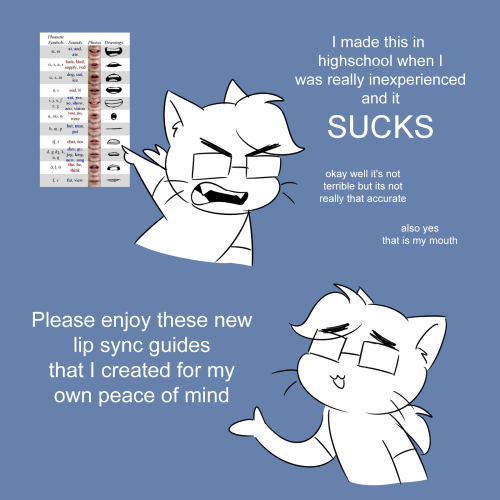
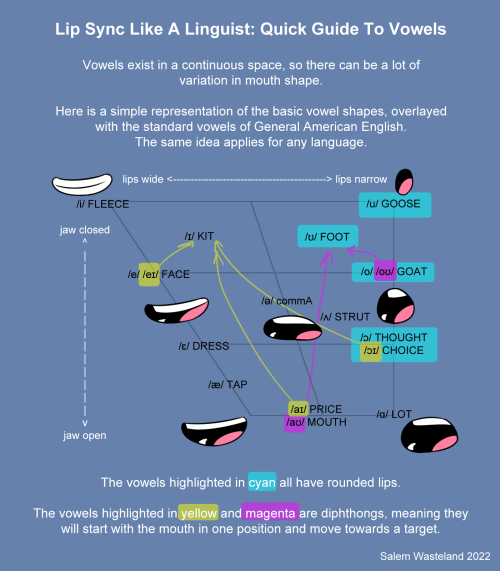
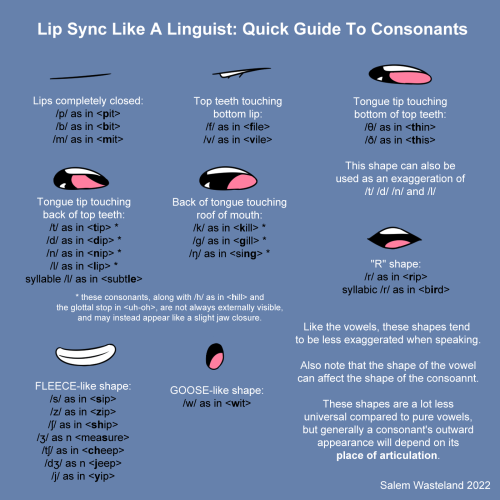
That ol’ chart of mine makes the rounds online periodically and it drives me crazy because it’s frankly not very good. So, I finally got around to remaking it.
I doubt this will get anywhere near as popular, but I wanted to make it.
Good reference for animation, comics, and for visualizing phonetics!


The Skeleton flower, whose petals turn from white to translucent when it rains.
The Skeleton flower (Diphylleia grayi) is a white woodland blossom flower with large, umbrella-like leaves that grows in moist, colder climates and wooded mountainsides and they are found in Japan, China and the Appalachian Mountains in the US. Indeed, the white petals turn glass-like when they get wet due to their loose cell struture and not because the pigments are being washed out. When it rains, water fills up the cells in the petals, hence turning clear. However, when the petals dry out, they turn back to their original white color. There's no conclusive research as to whether this characteristic is beneficial or a bad thing for these beautiful flowers.
📷 Unknown (credit to owner)
@sendhelpimstupid MY GOD I LOVE MUSHROOMS THIS LIT UP MY WEEK
Um hi yes, Uh I just drew this little mushroom spirit and I thought you might like it ;-; anyway hope you're having a good day okay bye

Oh my gosh they’re BEAUTIFUL!! HOLY MOLY the detail is stunning, and their expression is so soft and melancholy! And the little ghostly mushroom friends are flipping adorable!! You’re very talented! Thank you for sharing them with me!!
-
 boxxkitt reblogged this · 2 weeks ago
boxxkitt reblogged this · 2 weeks ago -
 15crown-of-hearts liked this · 2 weeks ago
15crown-of-hearts liked this · 2 weeks ago -
 sillycollectivecheesecake liked this · 2 weeks ago
sillycollectivecheesecake liked this · 2 weeks ago -
 ladyaster3 liked this · 2 weeks ago
ladyaster3 liked this · 2 weeks ago -
 riley1cannon liked this · 2 weeks ago
riley1cannon liked this · 2 weeks ago -
 ladyblackwillow liked this · 2 weeks ago
ladyblackwillow liked this · 2 weeks ago -
 bookgeekdom reblogged this · 2 weeks ago
bookgeekdom reblogged this · 2 weeks ago -
 that-there-is-a-dragon liked this · 3 weeks ago
that-there-is-a-dragon liked this · 3 weeks ago -
 grubbyhomunculus liked this · 3 weeks ago
grubbyhomunculus liked this · 3 weeks ago -
 mysticsheepplant liked this · 4 weeks ago
mysticsheepplant liked this · 4 weeks ago -
 honestlyjustchaos reblogged this · 4 weeks ago
honestlyjustchaos reblogged this · 4 weeks ago -
 snazzybadger reblogged this · 4 weeks ago
snazzybadger reblogged this · 4 weeks ago -
 chaosinsp reblogged this · 4 weeks ago
chaosinsp reblogged this · 4 weeks ago -
 spockulativefiction reblogged this · 1 month ago
spockulativefiction reblogged this · 1 month ago -
 guestishcats liked this · 1 month ago
guestishcats liked this · 1 month ago -
 cypress404 liked this · 1 month ago
cypress404 liked this · 1 month ago -
 wowitsnim liked this · 1 month ago
wowitsnim liked this · 1 month ago -
 silverstar5000 reblogged this · 1 month ago
silverstar5000 reblogged this · 1 month ago -
 silverstar5000 liked this · 1 month ago
silverstar5000 liked this · 1 month ago -
 nateblack99 liked this · 1 month ago
nateblack99 liked this · 1 month ago -
 wakkkkwak reblogged this · 1 month ago
wakkkkwak reblogged this · 1 month ago -
 wakwakowak liked this · 1 month ago
wakwakowak liked this · 1 month ago -
 squrtieman reblogged this · 1 month ago
squrtieman reblogged this · 1 month ago -
 squrtieman liked this · 1 month ago
squrtieman liked this · 1 month ago -
 charulein liked this · 1 month ago
charulein liked this · 1 month ago -
 pipuhattar liked this · 1 month ago
pipuhattar liked this · 1 month ago -
 rataplani reblogged this · 1 month ago
rataplani reblogged this · 1 month ago -
 writerpicks liked this · 1 month ago
writerpicks liked this · 1 month ago -
 kamkong reblogged this · 1 month ago
kamkong reblogged this · 1 month ago -
 kamkong liked this · 1 month ago
kamkong liked this · 1 month ago -
 verbalwish liked this · 1 month ago
verbalwish liked this · 1 month ago -
 angelicflowerz liked this · 1 month ago
angelicflowerz liked this · 1 month ago -
 gemderplantcat liked this · 1 month ago
gemderplantcat liked this · 1 month ago -
 boxxkitt reblogged this · 1 month ago
boxxkitt reblogged this · 1 month ago -
 deltapqrst liked this · 2 months ago
deltapqrst liked this · 2 months ago -
 aichan87 reblogged this · 2 months ago
aichan87 reblogged this · 2 months ago -
 yorkmork liked this · 2 months ago
yorkmork liked this · 2 months ago -
 boxxkitt liked this · 2 months ago
boxxkitt liked this · 2 months ago -
 demisexualwriter1987 liked this · 2 months ago
demisexualwriter1987 liked this · 2 months ago -
 wordless-beauty liked this · 2 months ago
wordless-beauty liked this · 2 months ago -
 infinitelystrangemachinex reblogged this · 2 months ago
infinitelystrangemachinex reblogged this · 2 months ago -
 starlightlumina liked this · 2 months ago
starlightlumina liked this · 2 months ago -
 tiniestapocalypse reblogged this · 2 months ago
tiniestapocalypse reblogged this · 2 months ago -
 razerathane liked this · 2 months ago
razerathane liked this · 2 months ago -
 korppitukka reblogged this · 2 months ago
korppitukka reblogged this · 2 months ago -
 zezacle liked this · 2 months ago
zezacle liked this · 2 months ago -
 boldlytiny--bouquet reblogged this · 2 months ago
boldlytiny--bouquet reblogged this · 2 months ago

23, Australian, this is where I'm dropping my writing inspo and pieces.
90 posts